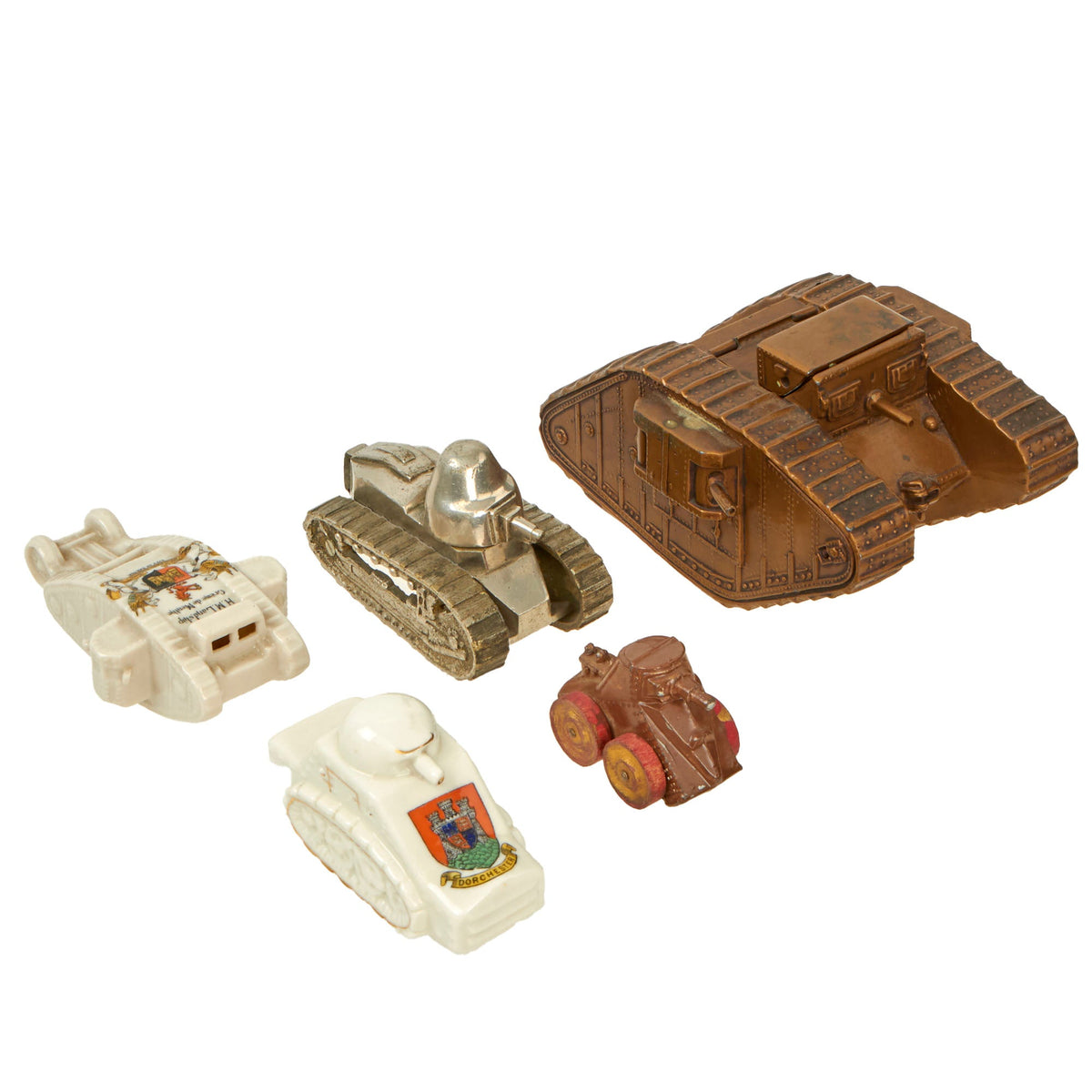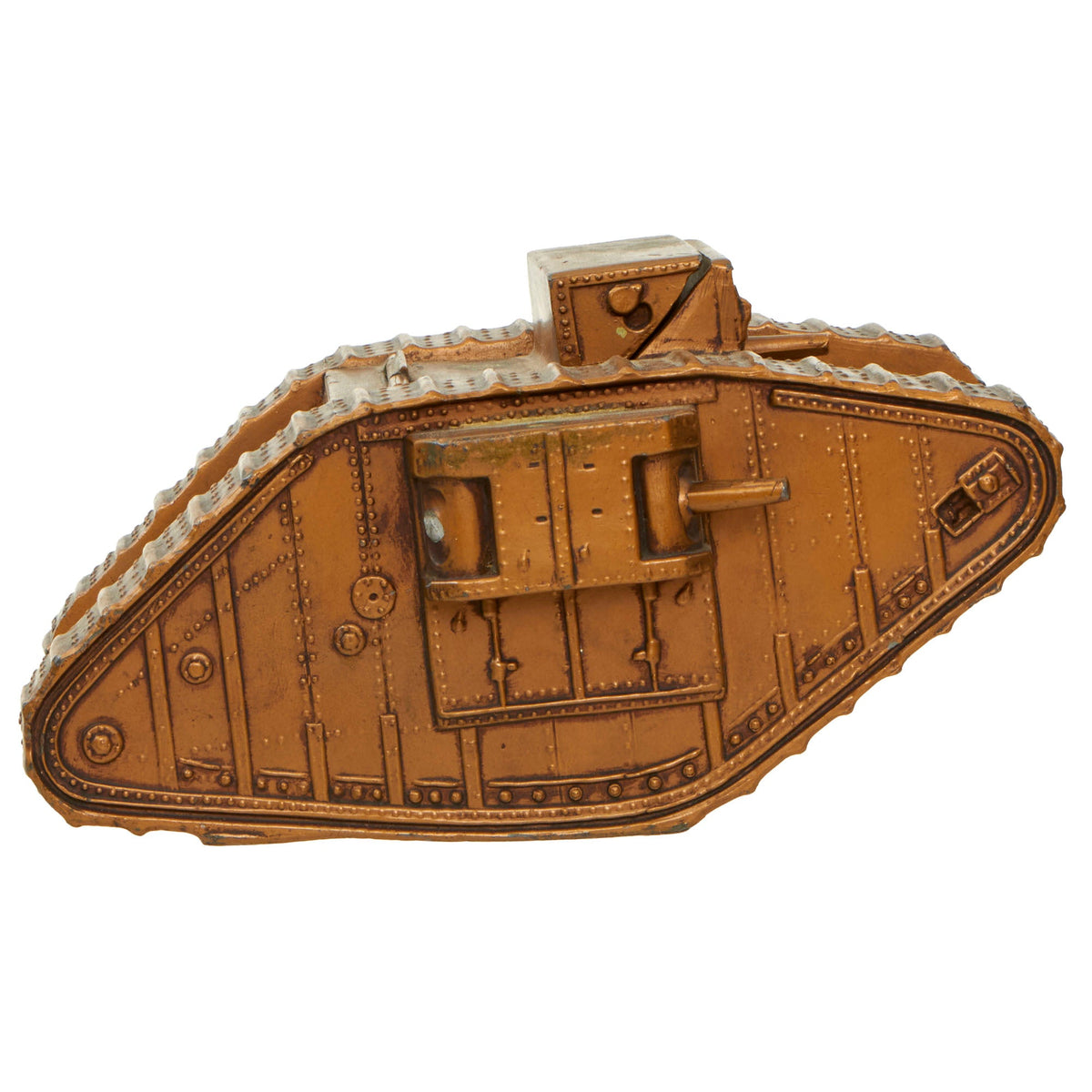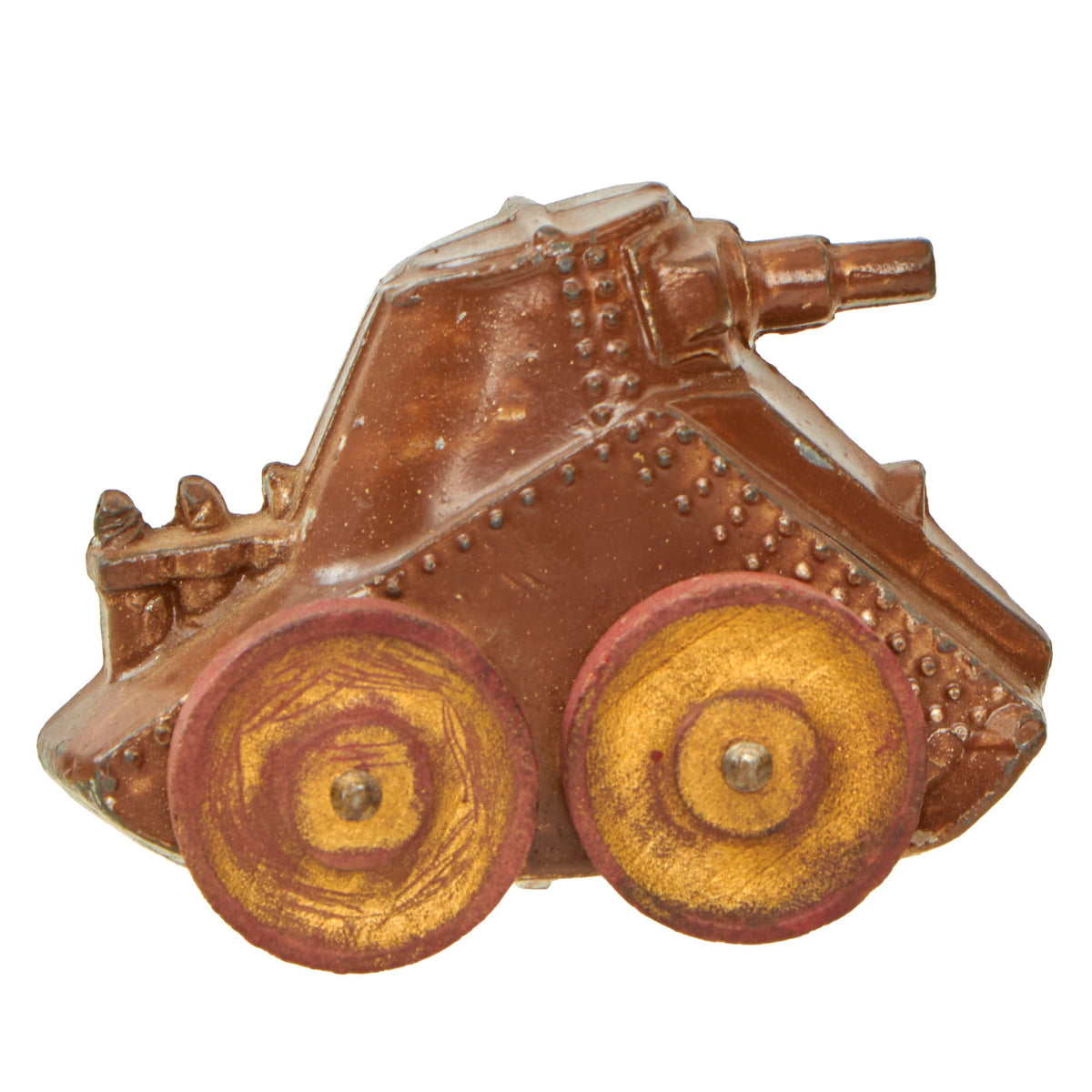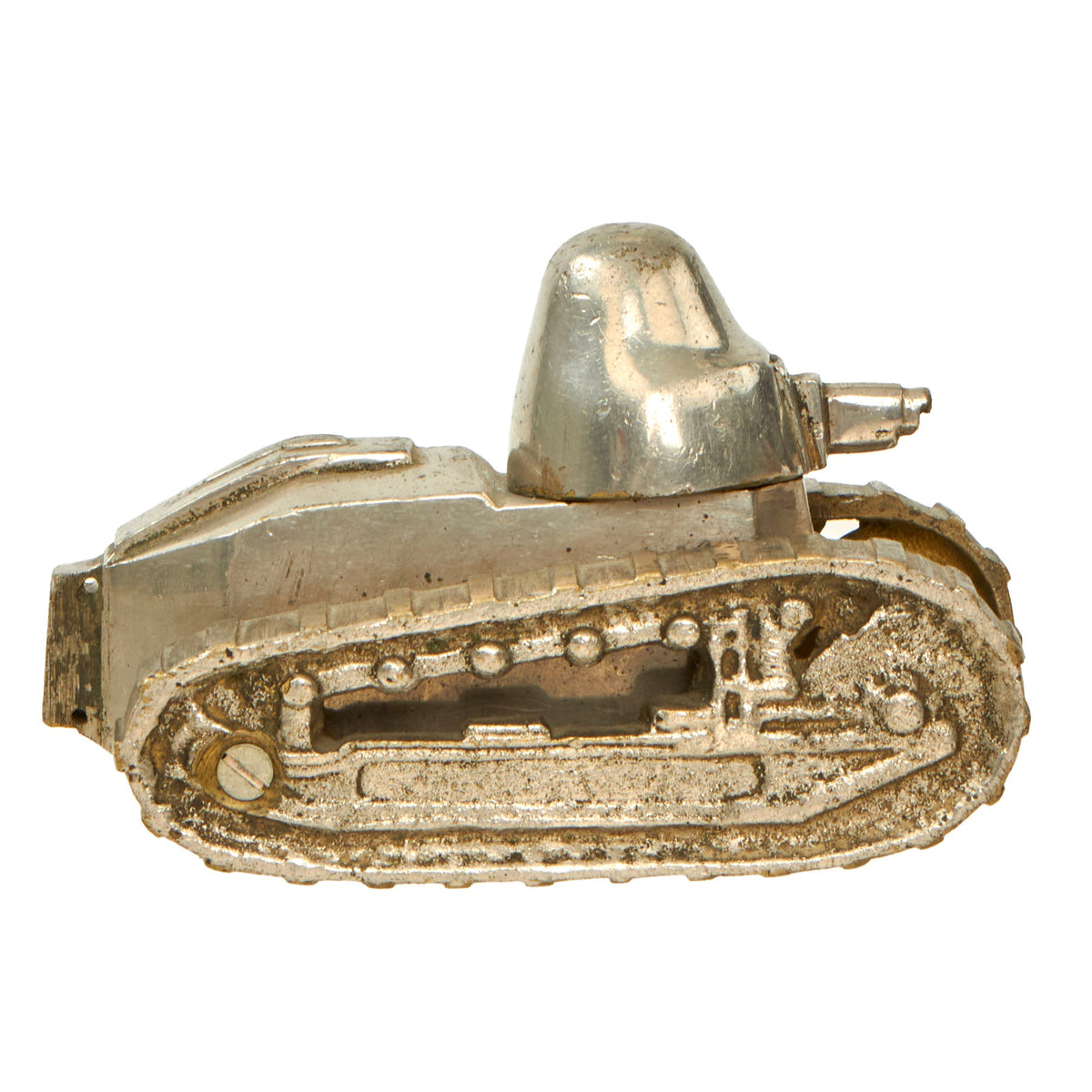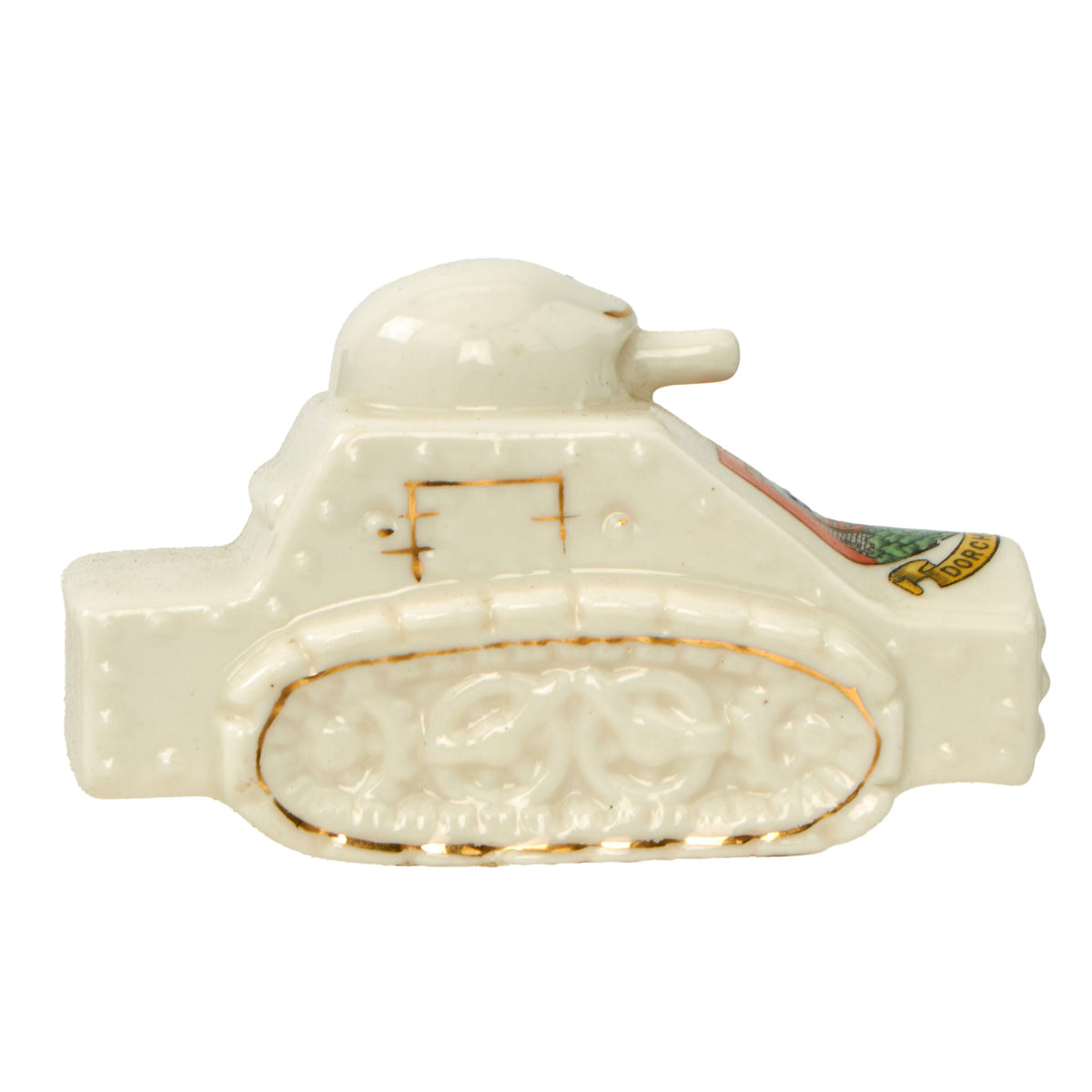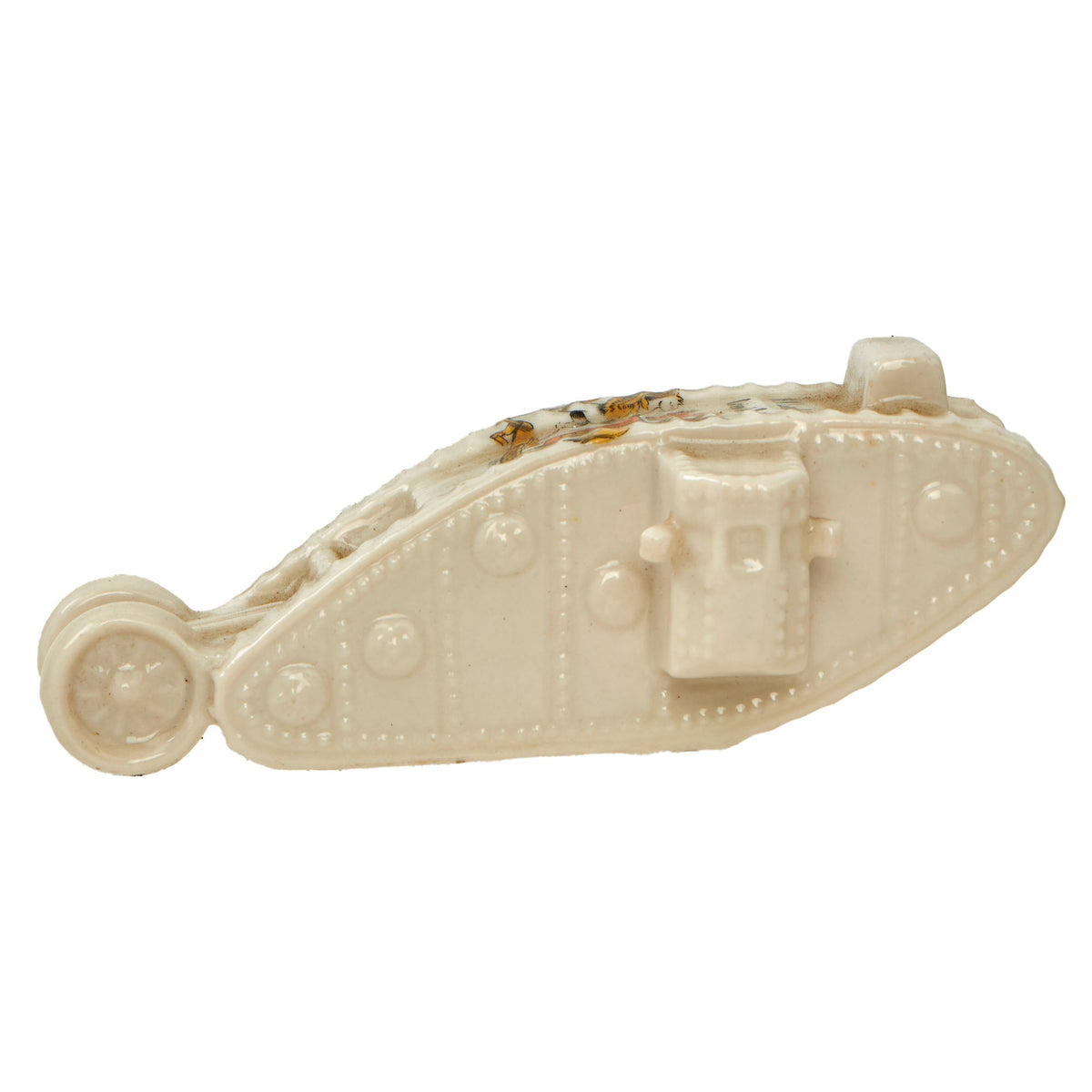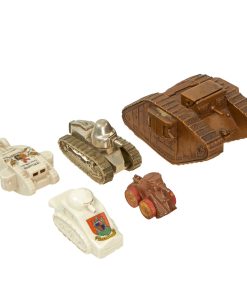Original British WWI Toy Tank Collection Featuring Brass Mk IV Tank – 5 Items – Formerly A.A.F. Tank Museum Collection Original Items
$ 395,00 $ 118,50
Original Items: Only One Lot of 5 Available. This is an excellent collection of children’s toy tanks from the British homefront during WWI. The tanks are all in wonderful condition and are without any damage aside from minor paint loss on the ceramic tanks.
The tanks came to us from the American Armoured Foundation, Inc. Tank and Ordnance Memorial Museum. The AAF Tank Museum was a living memorial dedicated to the Tank and Cavalry soldiers of the world. Before 1981 some of the artifacts that make up the AAF Tank Museum was a private collection belonging to Mr. William Gasser. Mr. Gasser felt that his collection would be beneficial in educating present and future generations to the sacrifices made and the technologies gained during war. Therefore, in 1981 the AAF Tank Museum was established as a non-profit charitable organization, and Mr. Gasser’s donated his private collection to the Tank Museum. Mr. Gasser is still active as Volunteer Director and Curator of the Tank Museum and his knowledge of military history has been a great asset to the museum. Unfortunately after 20 years of operation it had to close its doors, which is when these was acquired.
The tanks present:
– Mk IV (Male) Brass
– Mk IV Male
– x3 Renault FT Style Tanks
A great assortment ready for further research and display.
British Heavy Tanks of WWI
British heavy tanks were a series of related armoured fighting vehicles developed by the UK during the First World War. The Mark I was the world’s first tank, a tracked, armed, and armoured vehicle, to enter combat. The name “tank” was initially a code name to maintain secrecy and disguise its true purpose. The tank was developed in 1915 to break the stalemate of trench warfare. It could survive the machine gun and small-arms fire in “no man’s land”, travel over difficult terrain, crush barbed wire, and cross trenches to assault fortified enemy positions with powerful armament. Tanks also carried supplies and troops.
British heavy tanks are distinguished by a rhomboidal shape with a high climbing face of the track, designed to cross the wide and deep trenches prevalent on the battlefields of the Western Front. Due to the height necessary for this shape, an armed turret would have made the vehicle too tall and unstable. Instead, the main armament was arranged in sponsons at the side of the vehicle. The prototype, named “Mother”, mounted a 6-pounder (57 mm) cannon and a Hotchkiss machine gun at each side. Later, subtypes were produced with machine guns only, which were designated “Female”, while the original version with the protruding 6-pounder was called “Male”.
The Mark I entered service in August 1916, and was first used in action on the morning of 15 September 1916 during the Battle of Flers-Courcelette, part of the Somme Offensive. With the exception of the few interim Mark II and Mark III tanks, it was followed by the largely similar Mark IV, which first saw combat in June 1917. The Mark IV was used en masse, about 460 tanks, at the Battle of Cambrai in November 1917. The Mark V, with a much improved transmission, entered service in mid-1918. More than two thousand British heavy tanks were produced. Manufacture was discontinued at the end of the war.
Fast Shipping with Professional Packaging
Thanks to our longstanding association with UPS FedEx DHL, and other major international carriers, we are able to provide a range of shipping options. Our warehouse staff is expertly trained and will wrap your products according to our exact and precise specifications. Prior to shipping, your goods will be thoroughly examined and securely secured. We ship to thousands clients each day across multiple countries. This shows how we're dedicated to be the largest retailer on the internet. Warehouses and distribution centres can be located throughout Europe as well as the USA.
Note: Orders with more than one item will be assigned a processing date depending on the item.
Before shipping before shipping, we'll conduct a thorough inspection of the items you have ordered. Today, the majority of orders will be delivered within 48 hours. The delivery time will be between 3-7 days.
Returns
The stock is dynamic and we cannot completely manage it because multiple stakeholders are involved, including our factory and warehouse. So the actual stock may alter at any time. It's possible that you may not receive your order once the order has been made.
Our policy is valid for a period of 30 days. If you don't receive the product within 30 days, we are not able to issue a refund or an exchange.
You can only return an item if it is unused and in the same state as the day you received it. You must have the item in its original packaging.
Related products
Uncategorized
Uncategorized
Uncategorized
Uncategorized
Uncategorized
Australian WWII Owen MK1 Machine Carbine SMG Custom Fabricated Replica with Sling Original Items
Uncategorized
Uncategorized
Uncategorized
Uncategorized
Uncategorized
Angolan Rebel 1970s era 60mm Inert Display Mortar from Angolan Civil War Original Items
Uncategorized
Uncategorized
Uncategorized
Uncategorized
Uncategorized
Uncategorized
